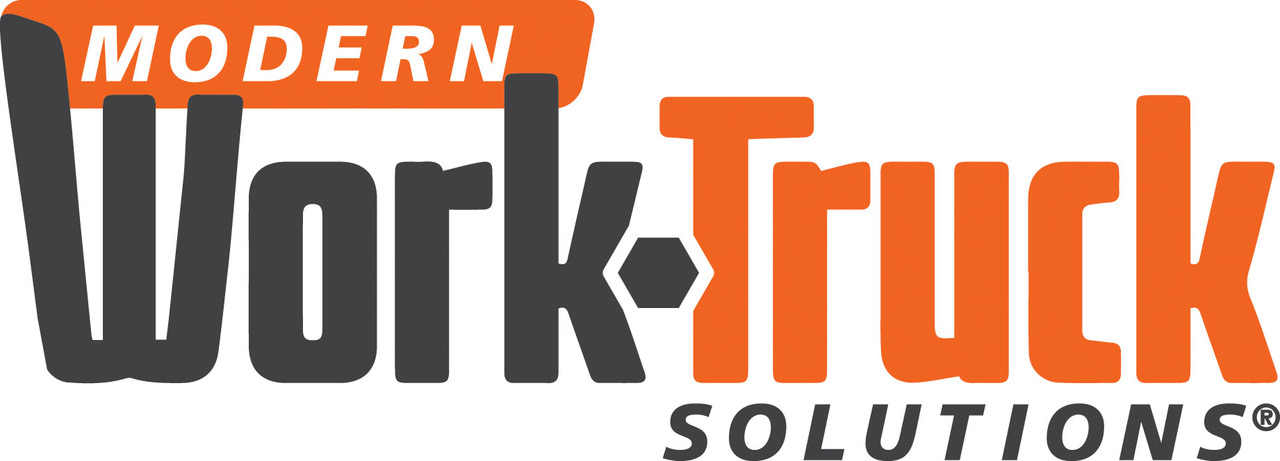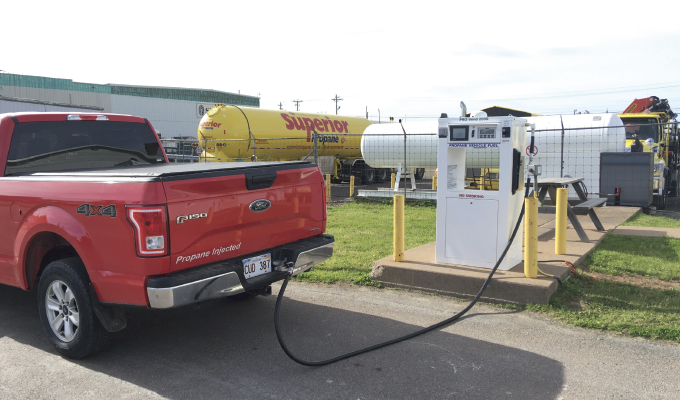Propane autogas work trucks make a lot of sense for urban, suburban, and rural work truck fleets across the country. Propane autogas costs up to 50 percent per gallon less than diesel and 40 percent less than gasoline, and because propane burns cleaner within an engine, maintenance and labor costs go down.
There are emissions and economic savings that can’t be denied, even by the most persnickety fleet operator or manager. However, there is one other major advantage to propane autogas for work truck fleet operators, and that is in the realm of refueling.
A BIT ABOUT PROPANE
Familiarity with propane for uses like space and water heating; cooking; and fuel for forklift and farm irrigation engines. When used as a vehicle fuel, such as for work trucks, propane is known as propane autogas. There are about 28 million propane autogas vehicles operating globally, according to estimates, which include school buses and transit/paratransit buses in addition to work trucks.
According to the Propane Education and Research Council (PERC), propane is a byproduct of natural gas processing, and to a lesser extent crude oil refinement. Renewable propane provides all the same low-cost and -emissions benefits of conventional propane but is an ultra-low-carbon option. Renewable propane is produced from feedstocks like plant and vegetable oils, animal fats and used cooking oil.
Propane is a cost-effective, resilient fuel that is at its core abundant – the U.S. produces more than enough propane to meet its own demands.
TYPES OF PROPANE AUTOGAS TRUCK REFUELING
What do you think of when it comes to diesel work trucks? Without doubt, it’s black smoke, which leads in many cases to a bad cough or aggravated asthma for drivers and anyone nearby.
Propane autogas trucks avoid all of that. There are three primary refueling options:
- A permanent onsite private refueling station, which includes a large-capacity propane storage tank, pump, meter and one or more dispensers. A propane provider will deliver fuel based on a fleet’s needs.
- A temporary refueling structure, which includes a skid-mounted tank, pump, and dispenser, all owned by the propane provider. The fleet uses the equipment as long as it takes to build a permanent onsite private station.
- Public refueling requires no infrastructure investment and there are hundreds of stations across the United States.
Of permanent onsite private refueling stations, there are two types:
- Advanced stations typically service more than 50 vehicles and carry a canopy and multiple fuel dispensers and a high-capacity tank.
- Standard stations typically service less than 50 vehicles and include a 1,000- to 3,000-gallon tank, canopy, and a single fuel dispenser.
Both station types can be owned by either the propane provider or the fleet itself, and often a propane provider can provide and install a station for fleets through signage of a fuel contract. Fuel deliveries are made when necessary – once per week, for example, or even daily if required.
STEPS TO PROPANE AUTOGAS REFUELING SUCCESS
Propane autogas work truck refueling is easy, almost identical to diesel or gasoline, and just as fast, taking minutes to fuel. That’s a lot better than the hours it takes to recharge an electric truck.
There are seven key steps to ensure a successful propane autogas fill every time:
- Make sure the truck is off.
- Verify there are no open flames or ignition sources within 25 feet of the truck.
- Open the fuel door and unscrew the dust cap.
- Check that the filling connection is clean, i.e., free of road debris.
- Remove the K-15 fuel nozzle from the dispenser and push the nozzle over the fill valve to ensure it is engaged.
- Activate the dispenser and begin fueling. When the fuel tank reaches 80 percent capacity, fuel flow will automatically stop due to an overfill protection device
- After disconnecting or releasing the nozzle, return it to the dispenser, replace the dust cap, and shut the fuel door.
Station maintenance should be conducted quarterly, with three important tasks: routine pump maintenance; testing dispenser functionality; and testing safety systems. Driver training should be conducted once every three years.
GENERATING DISPENSER-LEVEL DATA
There are other dispenser-specific advantages to propane autogas refueling. Some dispensers are smart enough to track data that helps a fleet operator manage vehicles and drivers. For example, Superior Energy Systems’ PRO-Vend 2000/25000 dispensers track data like driver and vehicle information, gallons pumped and mileage for a virtually unlimited number of vehicles. The cloud-based system updates in real time and is available 24/7 via mobile phone or any computer connected to the Internet.
Alternatively fueled work trucks and refueling them go hand in hand. For fleet operators, refueling must be fast and seamless, which is why working with a local propane provider is the first step to reduced emissions and cost.
about the author
Scott Dougherty has worked for Superior Energy Systems in Columbia Station, Ohio, for 13 years, beginning his career there while still in high school and advancing to his current position of sales engineer. Scott works in various facets of the NGL industry, including midstream, industrial and autogas.




